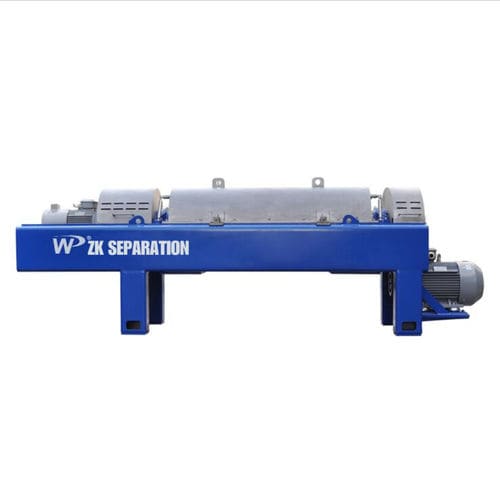
#Industry News
Harvesting Algae by Means of Centrifuges
How to Harvest Algae?
Harvesting Algae by Means of Centrifuges
What is Algae?
Algae are simple, flowerless aquatic organisms that are diverse and widespread throughout the planet and play an important role in the aquatic food chain. Algae produce about 70% of the oxygen in the atmosphere, and they can be classified mainly as microalgae and macroalgae.
What Can Algae Do?
Single-celled microscopic algae are called microalgae and multicellular filamentous, membranous, tubular, or foliar plants are called macroalgae, which are autotrophic oxygen-releasing plants. Their growth does not require fresh water, soil, or fertilizers, reducing the need for land and natural resources and eliminating emissions from growing or irrigating crops, thus being very beneficial to the environment.
Algae have high industrial, agricultural, edible, and pharmaceutical values. Not only can it be extracted or used to make iodine, potassium, fucoidan, mannitol, methane, ethanol, light oil, lubricating oil, paraffin, rubber, plastic, and many other industrial products, but it can also be refined and processed as a new bioenergy source to produce biodiesel.
According to relevant research data, for every 1 ton of microalgae cultivated, 2 tons of CO2 emission reduction can be achieved. In addition, algae contain a large amount of bio-oil, and the theoretical value of oil production per unit area is much higher than other plants. On each hectare of land, the annual oil production of corn is only 120 liters and soybean is 440 liters, while algae can reach 15,000 to 80,000 liters.
How to Harvest Algae?
However, the harvesting of microalgae is not that simple. There is no single best method of harvesting microalgae. The choice of preferable harvesting technology depends on algae species, growth medium, algae production, end product, and production cost benefit.
Harvesting is defined as the separation of algae from a growing medium. Techniques for harvesting algae include settling or flotation, centrifugation, and filtration.
In this process, a commonly used machine is a continuous-flow centrifuge. It is efficient and collects both algae and other particles. However, it is more commonly used for the production of value-added products from algae. Centrifuge can achieve high cake dryness in the separation and low energy demand during the process.
Disc stack centrifuge and decanter centrifuge can greatly shorten the production cycle by accelerating clarifying time and reducing labor costs and guaranteeing the purity of final products at the same time.
I. Disc Stack Centrifuge
A disc stack centrifuge is a specific kind of centrifugal separator. A set of conical plates (disc stack) is added to the bowl of a centrifugal separator. The addition of the 'disc stack' introduces a more settling area. This added surface area speeds up the separation process exponentially.
The advantage of this centrifuge for algae harvesting is its ability to produce in a single step, a concentrate containing 15-25% solids with no addition of chemicals. This machine concentrated various types of microalgae effectively, and the TSS (Total Suspended Solids) of the concentrate was between 12% to 25%. The degree of the algae suspension clarification increases with increasing residence time (decreasing feed rate) and the ejected solid concentration is affected by the intervals between successive desludging. Since the whole suspension has to be put into the rotation to create a centrifugal force up to 10,000 g’s, the specific energy demand is relatively high. Therefore, this process is suitable especially for small and middle-sized facilities.
II. Decanter Centrifuge
The scroll-type (decanter) continuous conveyor-discharge centrifuge is characterized by a horizontal conical bowl. The bowl contains a screw conveyor that rotates in the same direction but at a slightly higher speed. Feed enters through an axial tube at the center of the rotor, passes through openings in the screw conveyor, and is thrown to the rotor wall. Deposited solids are moved by a helical screw conveyor up a sloping beach out of the liquid and discharges.
Mohn(1980) used successfully a screw centrifuge for various algae-type slurry concentrations and obtained 22% TSS out of 2% TSS algae slurry. The reliability of this device seems to be excellent but the energy consumption is too high. So, a two-stage process was adopted, which added a pre-concentration process before the decanter. In this way, water has been separated beforehand, so there is less water the decanter needs to separate. Therefore, this process is suitable especially for large-scale operations.





